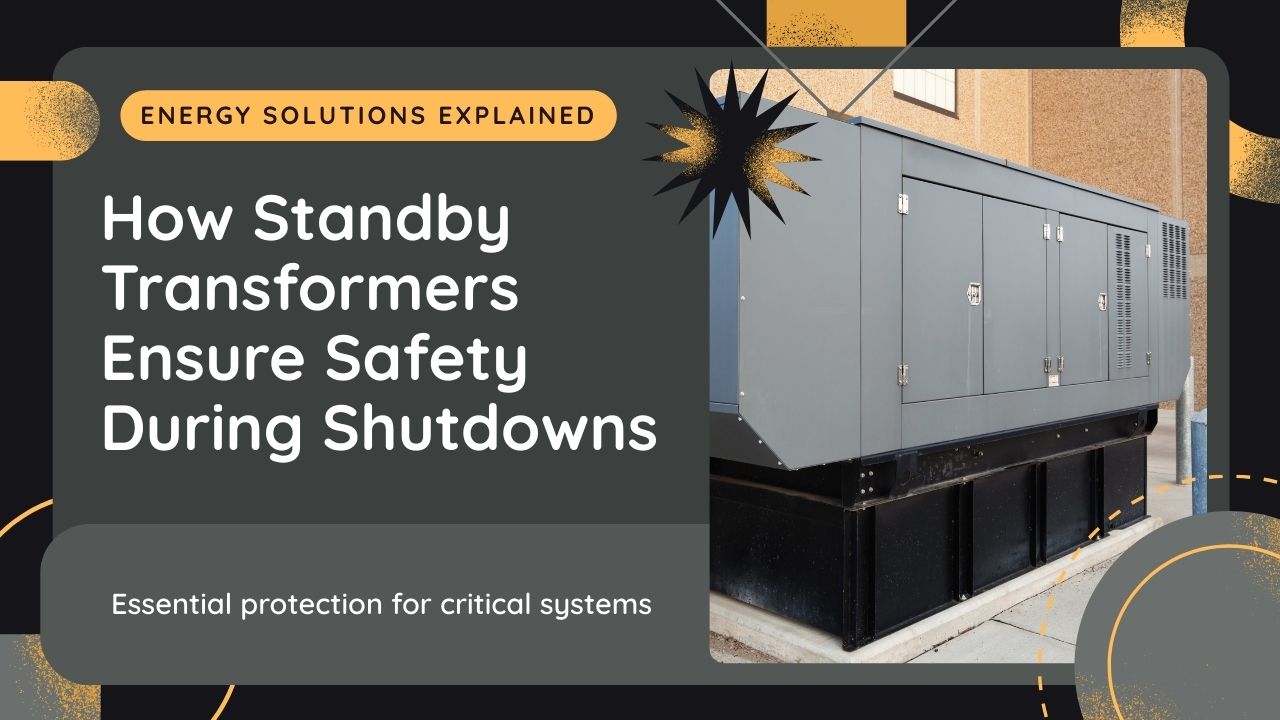

A transformer failure rarely stays quiet. Alarms go off. Systems halt. Operators scramble. And unless power returns quickly, that temporary blip becomes a full-scale disrupti
In industrial plants, the domino effect can move fast, hitting processes, safety systems, and even data.
A standby transformer creates breathing room. Not just to restore power, but to recover in a way that avoids compounding damage.
Let’s walk through what a standby transformer actually does for your facility when the clock starts ticking.
The first loss is time. But what follows can be far more complicated: voltage instability, automation errors, and load loss in unexpected areas.
Every minute that systems remain down, those risks build.
A standby transformer limits that spiral. It picks up load before battery banks hit depletion, before temperature controls fall out of range, before shutdown triggers cascade across operations. And when response windows are tight, that buffer buys you the control to act methodically, not reactively.
When the failed transformer is your only one, the pressure to bring it back fast can lead to rushed decisions. And rushed repairs often bring repeat failures.
A standby unit shifts the dynamics. You can isolate the fault, run diagnostic tests, and verify root causes before touching the original unit.
This allows your team to trace secondary damage (burned connections, cracked insulation, oil contamination) without time pressure distorting the picture.
With breathing room, the fix tends to stick.
Shifting load during an emergency should feel like a clean handoff, not a patch job.
In real terms, that means minimal switching complexity, predictable current paths, and safe tap settings.
A well-configured standby transformer lets you achieve that. It shares the same interface specs, fits into the layout without rewiring, and holds enough capacity to carry critical loads.
Without it, you’re left juggling smaller transformers or partial circuits, which often complicates restoration and overload protection.
A spare transformer in a warehouse won’t help much unless it fits the real conditions on site. That includes physical constraints, cooling arrangements, cable entry, and even ambient air flow.
Some standby units are permanently installed, others are mobile with plug-and-play connectors. What matters is that the standby is ready—not just available.
We’ve seen facilities pre-wire bays with matching busbars or install auto-transfer logic ahead of time, making deployment as fast as closing a breaker.
A standby transformer earns its place even during non-emergency events.
You can rotate it in during overhauls. You can use it for stress tests. You can even rely on it when installing new loads, buying time to upgrade primary units.
In long-term planning, that flexibility becomes a strategic asset.
Some teams integrate standby units into thermal load-sharing systems, which helps with peak shaving or energy balancing. So the value goes far beyond emergency support; it touches your entire reliability strategy.
At Makpower, we’ve seen how a standby transformer shifts the tone of emergency response, from scramble to structured. But it takes foresight.
In the builds we’ve delivered, the best results came when the standby unit was part of the plan from the start—matched, tested, and kept ready.
Whether it’s a fixed spare or a mobile drop-in, we treat it like a working part of the system, not just a backup. That mindset turns resilience into something you can depend on.